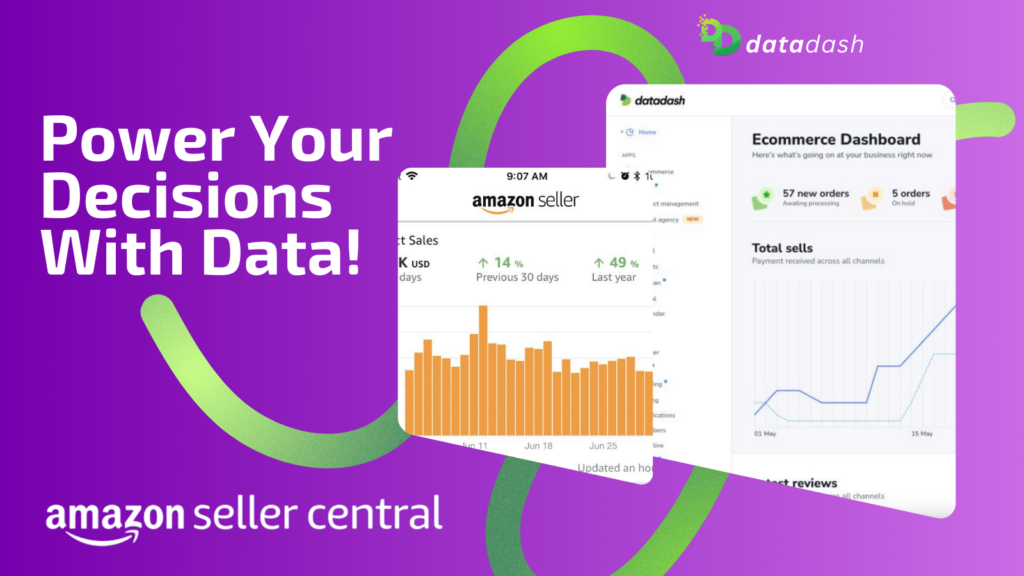In the dynamic world of e-commerce, understanding your data is crucial for success. For Amazon sellers, having access to accurate analytics is key to optimizing sales, managing inventory, and staying ahead of the competition. Fortunately, Amazon Seller Central offers a range of analytics tools to help sellers make informed decisions. However, with so many options available, choosing the right tools can be overwhelming. To simplify the process, here are five steps to help you select the best analytics tools within Amazon Seller Central.
Step 1: Define Your Business Needs
Before diving into the multitude of analytics tools available, it’s crucial to have a clear understanding of your business needs. This step lays the foundation for selecting the right tools that will provide meaningful insights and drive growth for your Amazon business.
Start by identifying the key metrics essential for monitoring and evaluating your business performance, such as sales performance, inventory management, customer feedback, and advertising effectiveness. Understanding these metrics will help you assess the overall health of your business and identify areas for improvement.
Next, pinpoint any pain points or challenges you’re facing, whether it’s inventory forecasting, competition analysis, or customer satisfaction. Prioritize features and functionalities in an analytics tool that address these challenges and align with your business goals.
Finally, consider future growth and expansion plans. Your chosen analytics tools should be scalable and able to accommodate increasing sales volume, expanding product lines, or entering new markets. By thoroughly defining your business needs, you’ll be better equipped to select analytics tools that provide maximum value and support your business’s long-term success.
Step 2: Explore Built-in Analytics Tools
Amazon Seller Central provides a variety of built-in analytics tools designed to help sellers track performance, monitor inventory, and analyze customer behavior. These tools include:
– Sales Dashboard: Provides an overview of sales performance, including total orders, revenue, and units sold.
– Inventory Dashboard: Offers insights into inventory levels, restock recommendations, and inventory health.
– Advertising Reports: Allows sellers to track the performance of their advertising campaigns, including click-through rates, conversion rates, and advertising costs.
– Customer Feedback: Provides feedback from customers, including reviews and ratings, which can help sellers improve product quality and customer satisfaction.
Take the time to explore these tools and familiarize yourself with their features to determine which ones align best with your business needs.
Step 3: Consider Third-party Analytics Solutions
While Amazon Seller Central offers valuable built-in tools, third-party analytics solutions can provide additional insights and functionality. One such solution is DataDash, which offers advanced analytics and reporting capabilities tailored specifically for Amazon sellers.
DataDash integrates seamlessly with Amazon Seller Central, providing enhanced features such as:
– Advanced Sales Analytics: Detailed insights into sales performance, including sales trends, profit margins, and product performance.
– Inventory Forecasting: Accurate predictions of future inventory needs based on historical data and market trends, helping sellers avoid stockouts and overstocking.
And much more…
By leveraging third-party solutions like DataDash, sellers can access deeper insights and gain a competitive edge in the marketplace.
Step 4: Evaluate Pricing and Scalability
When choosing analytics tools, it’s essential to consider pricing and scalability. Evaluate the cost of each tool relative to your budget and the value it provides to your business. Some tools may offer tiered pricing plans based on the level of features and usage, so be sure to choose a plan that aligns with your needs and growth goals.
Additionally, consider the scalability of the tools. As your business expands, you’ll want analytics solutions that can grow with you and accommodate increasing data volumes and complexity.
Step 5: Seek User Feedback and Reviews
Before making a final decision, seek out feedback from other Amazon sellers who have experience with the analytics tools you’re considering. Online forums, social media groups, and review platforms can be valuable resources for gathering insights into the user experience, reliability, and effectiveness of different tools.
Pay attention to reviews and testimonials from sellers who share similar business models or challenges to yours. Their experiences can provide valuable insights and help you make an informed decision.
Conclusion
Choosing the right analytics tools within Amazon Seller Central is essential for maximizing sales, optimizing inventory management, and staying competitive in the e-commerce marketplace. By following these five steps—defining your business needs, exploring built-in tools, considering third-party solutions like DataDash, evaluating pricing and scalability, and seeking user feedback—you can select the tools that best fit your requirements and drive success for your Amazon business.
Remember, investing in the right analytics tools is an investment in the future growth and profitability of your business. With the right insights at your fingertips, you can make informed decisions that propel your Amazon business to new heights.
In conclusion, leveraging analytics tools within Amazon Seller Central can give you a significant advantage in managing your business effectively. By taking the time to understand your needs, exploring available options, and seeking out feedback, you can choose the tools that will best support your goals and help you succeed on the platform.



